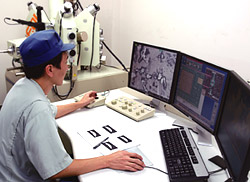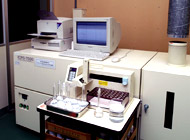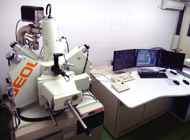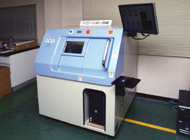Early Development of Lead-Free Solder
Advanced Development Based on the Demands of the Times and Customer Needs
 The passage of time and advances in products using solder have brought ever greater diversification of the qualities required of solder, including melting temperature, thermal conductivity, electrical resistance, and other properties. At Solder Coat, experts in each field make full use of our leading-edge facilities for constant research and development to provide our customers with alloy compositions and forms suited to their particular applications.
The passage of time and advances in products using solder have brought ever greater diversification of the qualities required of solder, including melting temperature, thermal conductivity, electrical resistance, and other properties. At Solder Coat, experts in each field make full use of our leading-edge facilities for constant research and development to provide our customers with alloy compositions and forms suited to their particular applications.
Environmental accountability led us to start research into "lead-free solder," now already considered the standard type, since the 1990s. So as not to fall behind governmental standardization in 2002 and JIS standards set in 2005, we decided to create an even more complete product line.
Peering even further into the future, we are now researching "halogen-free solder," and have even incorporated this in some of our products.
"There is no kind of solder we can't make." This simple yet lofty aim is shared by all our researchers and has become one vitalizing factor in their research work.
Test, examination, and analytical equipment



Other test, examination, and analytical equipment